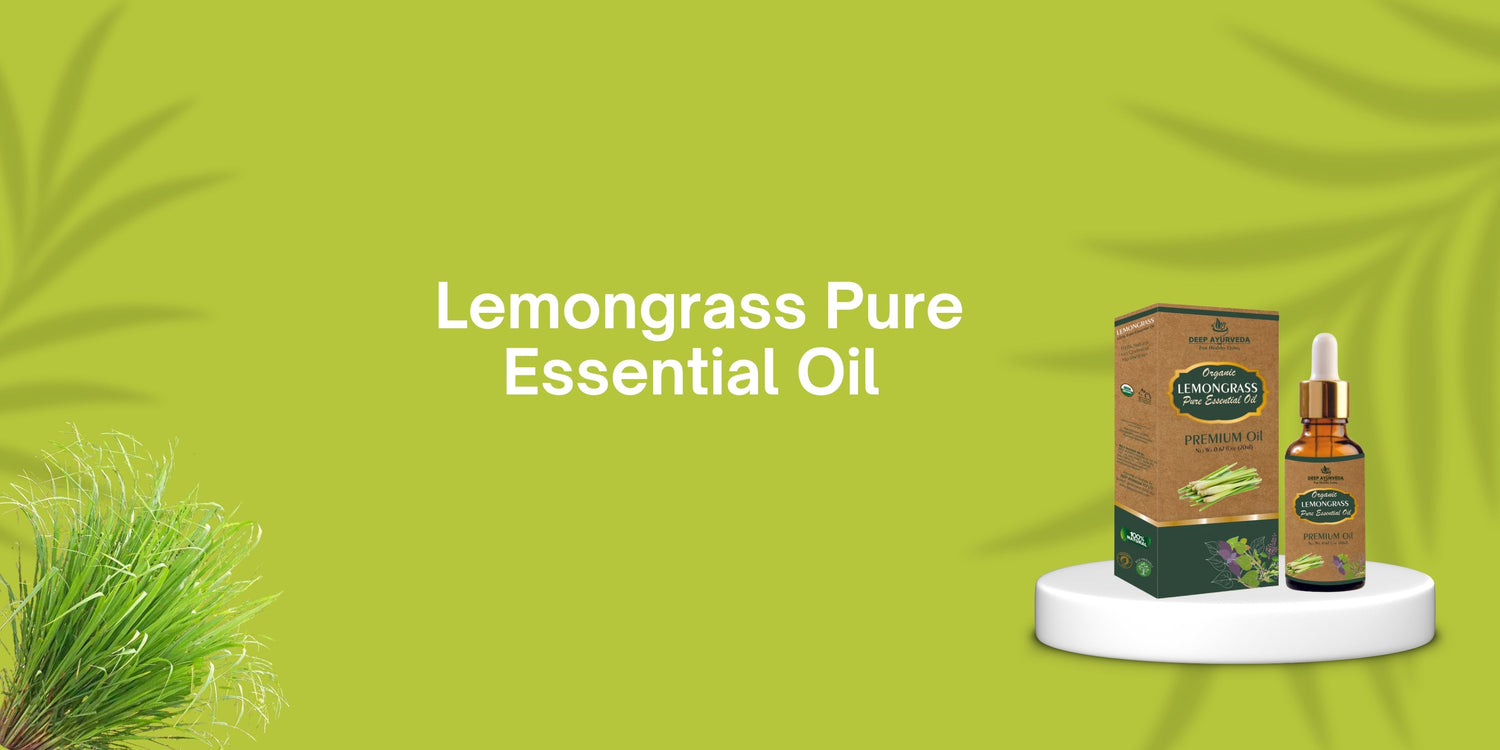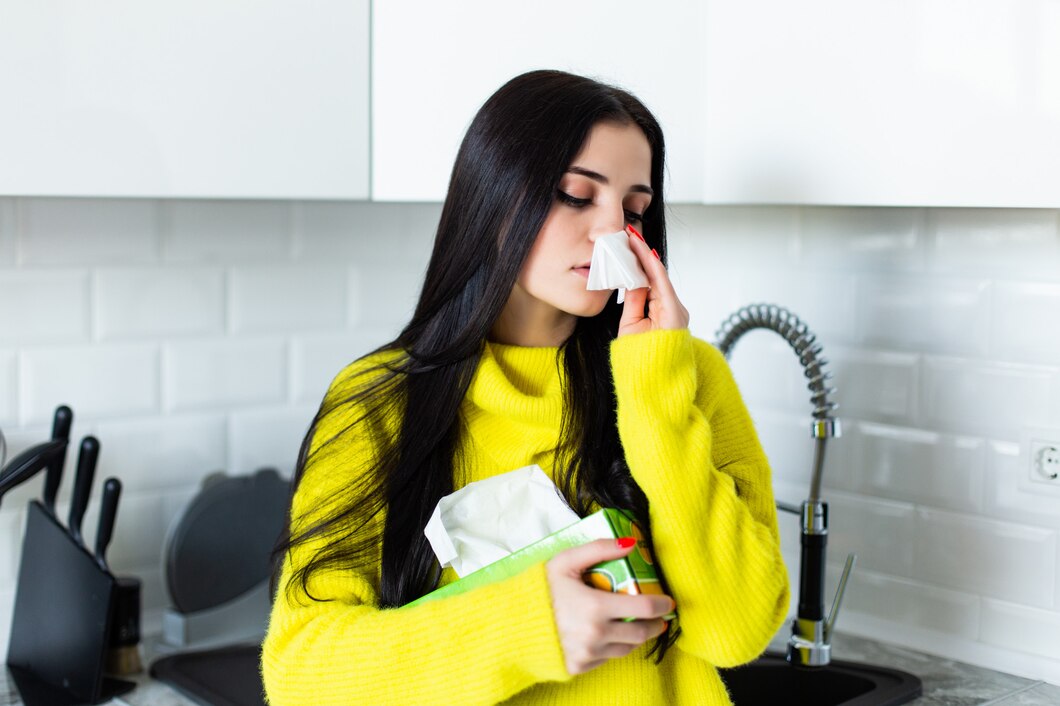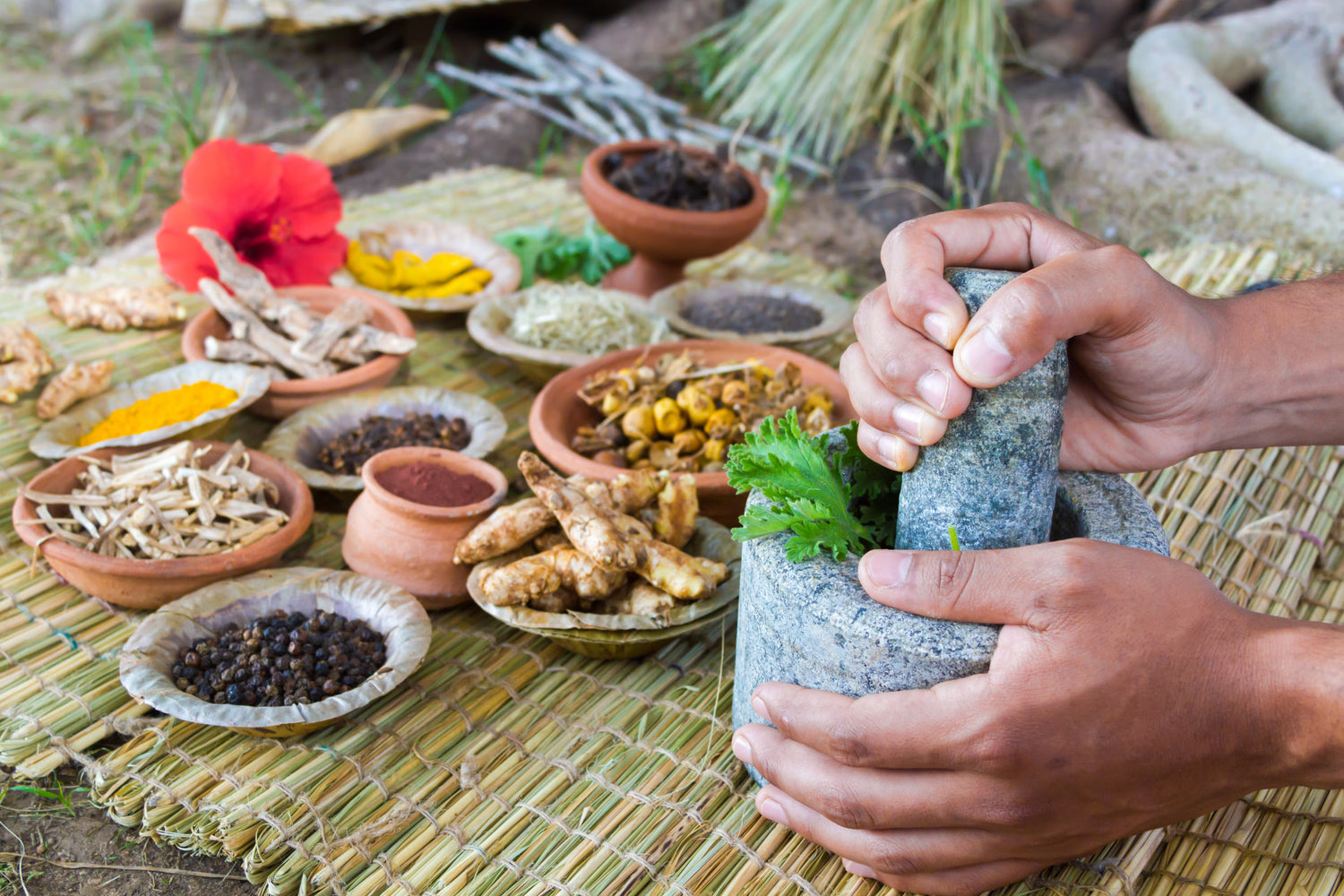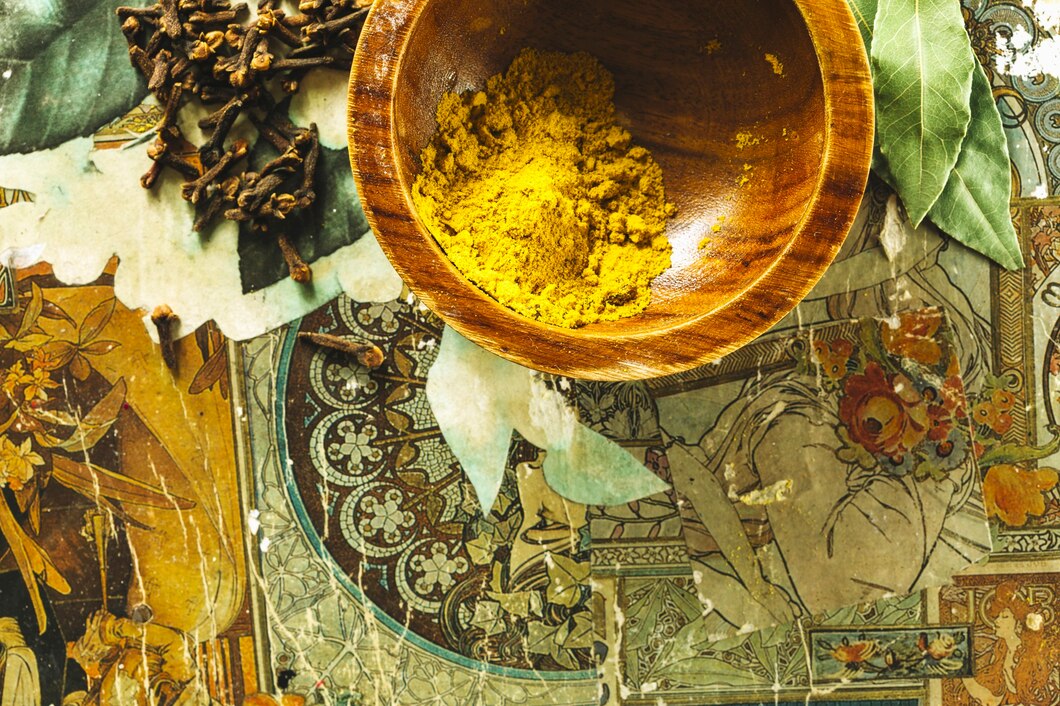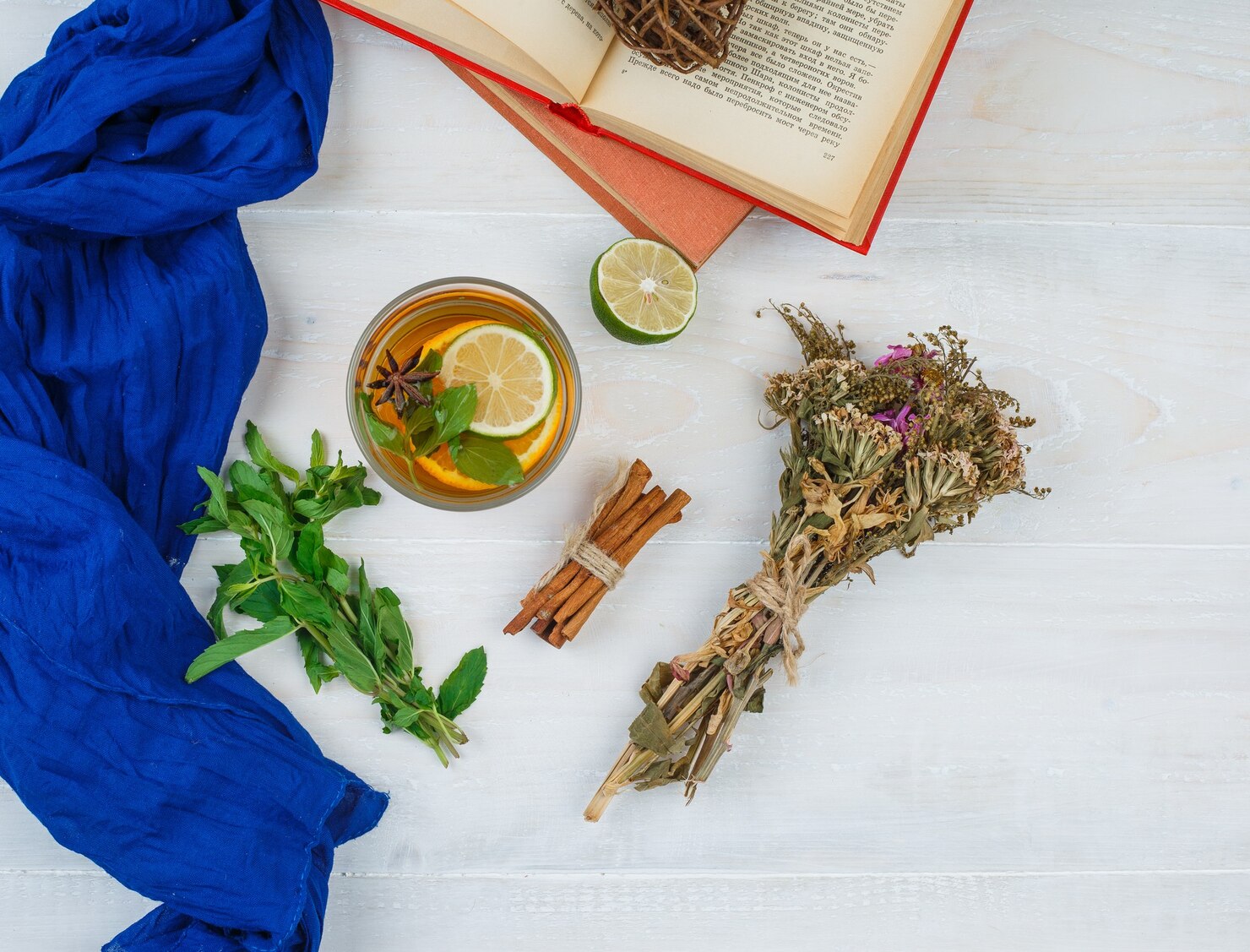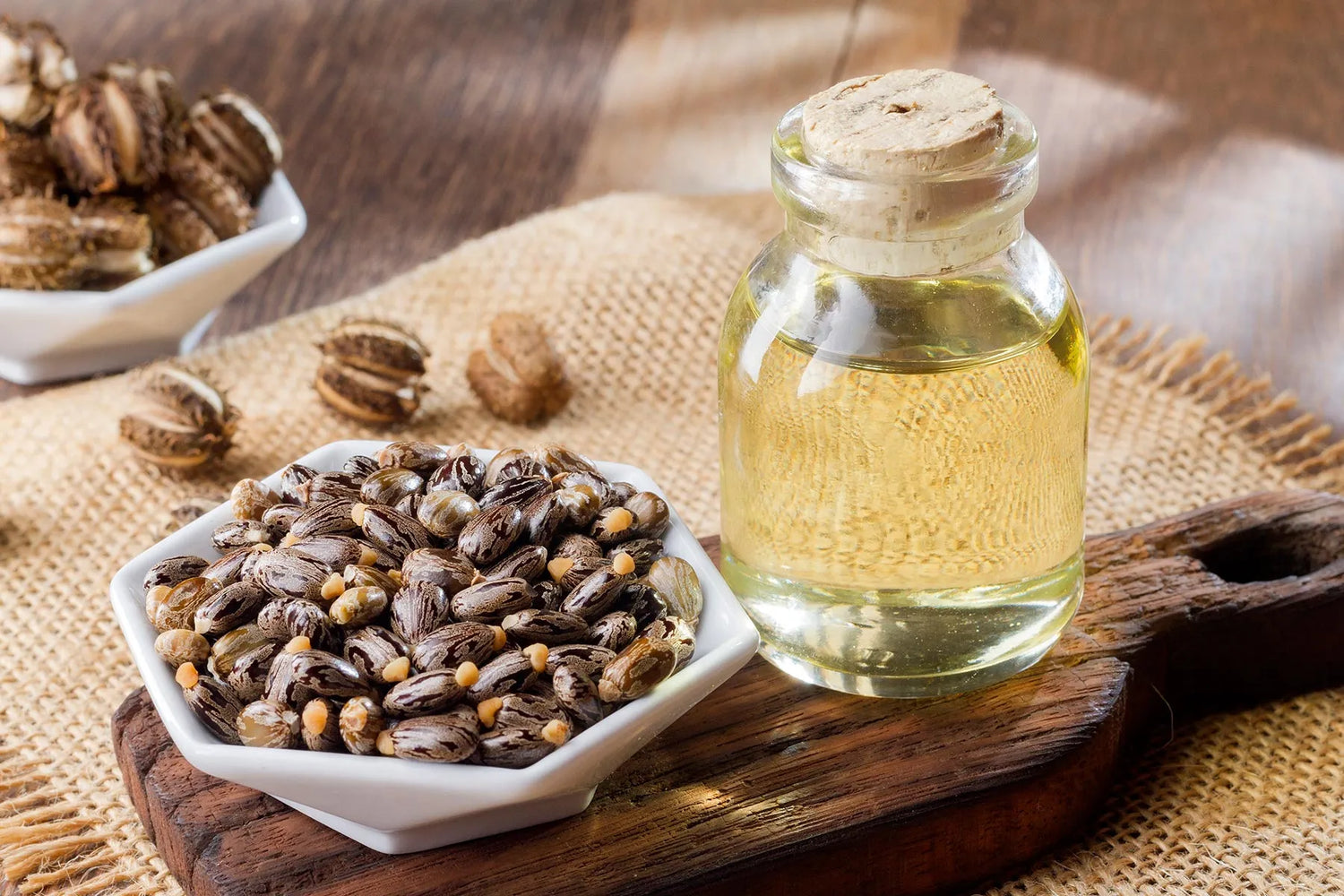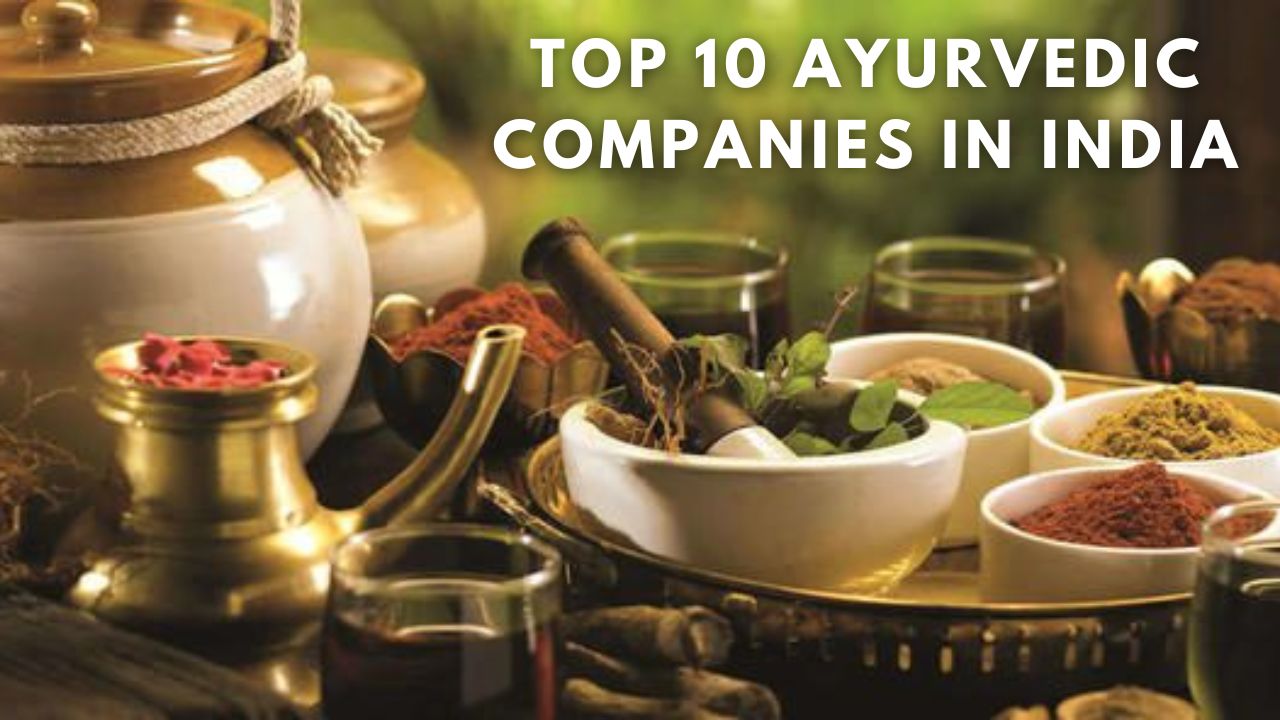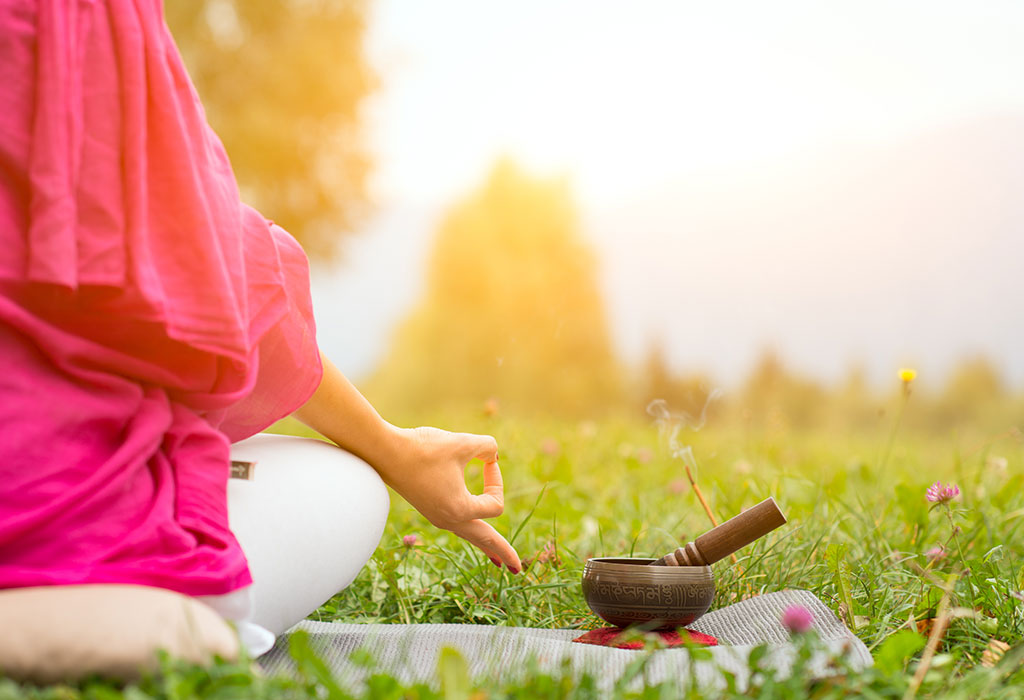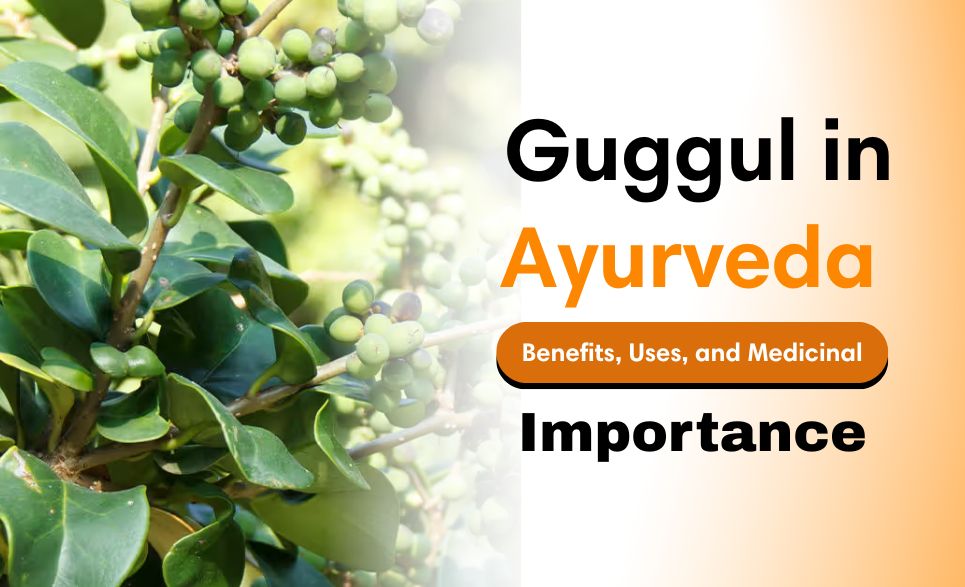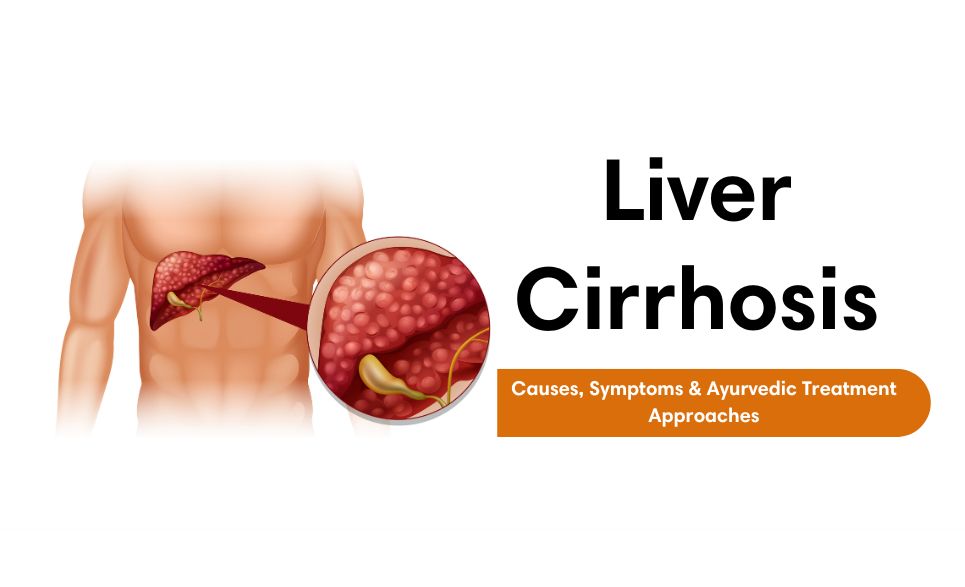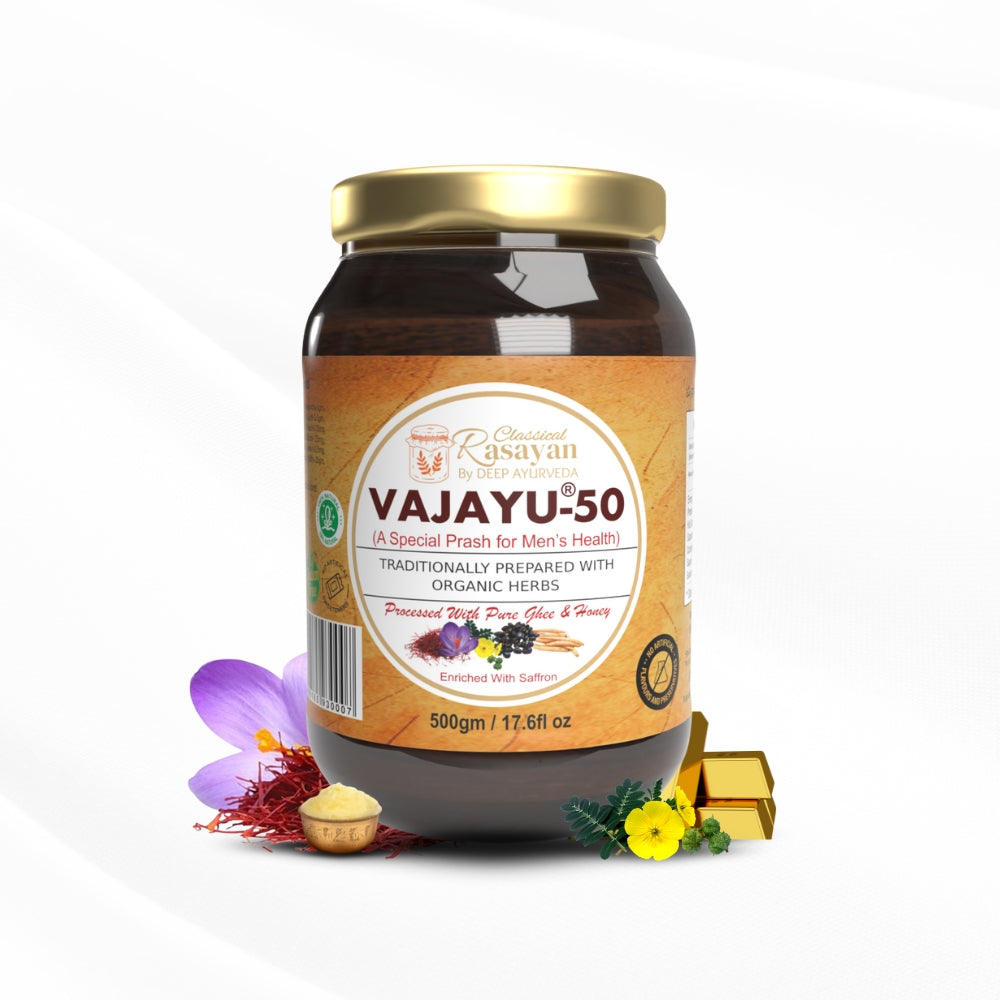समाचार
Lemon Grass Essential Oil-Benefits And Uses
Lemongrass is a refreshing Ayurvedic herb known for its digestive, detoxifying, and immunity-boosting properties. Rich in antioxidants, it supports healthy digestion, relieves bloating, and helps the body flush out toxins naturally while keeping the mind calm and refreshed. The essential oil of lemongrass is widely used for its therapeutic benefits. In this blog, we will explore the amazing benefits of lemongrass oil, its traditional Ayurvedic uses, and the different ways it can be incorporated into daily life for health, beauty, and overall well-being. What Is Lemongrass? Lemongrass (Cymbopogon citratus) is a fragrant, tropical herb widely used in Ayurveda for its medicinal and culinary value. It is rich in essential oils and antioxidants, giving it strong healing properties. Properties of Lemongrass: Rasa (Taste): Tikta (bitter), Katu (pungent) Guna (Qualities): Laghu (light), Ruksha (dry) Virya (Potency): Ushna (hot) Vipaka (Post-digestive effect): Katu (pungent) Key Benefits of Lemongrass Essential Oil 1. Supports immune function & fights infections-Lemongrass is packed with antioxidants and essential oils that strengthen the immune system and protect the body against harmful pathogens. Its natural antibacterial and antifungal properties help fight infections, colds, and flu while promoting overall wellness. 2. Helps in muscle & joint pain relief-Lemongrass oil is widely used for relieving muscle stiffness and joint pain due to its anti-inflammatory and analgesic properties. Regular massage with this oil helps reduce swelling, improve blood circulation, and provide soothing comfort to sore muscles and joints. 3. Enhances mental clarity & focus-The refreshing aroma of lemongrass oil helps calm the mind, reduce stress, and uplift mood. It stimulates the senses, improves concentration, and enhances mental clarity, making it beneficial for focus and productivity. 4. Aids in digestion & detoxification-Lemongrass supports healthy digestion by relieving bloating, indigestion, and stomach discomfort. Its natural detoxifying properties help flush out toxins from the body, cleanse the system, and promote better metabolism. 5. Acts as a natural insect repellent-Lemongrass oil is a safe and effective natural remedy to keep insects and mosquitoes at bay. Its strong, citrusy aroma repels pests, making it ideal for use in sprays, diffusers, or topical applications for protection against bites. Common Uses of Lemongrass Essential Oil Aromatherapy: Add a few drops to a diffuser to refresh the environment and uplift mood. Massage Oil: Blend with a carrier oil (like coconut or sesame) for relaxing massage therapy. Skin Care: Use in diluted form to manage acne, oily skin, or fungal infections. Hair Care: Mix with shampoo or carrier oil to strengthen hair and reduce dandruff. Natural Cleaner: Add to cleaning solutions for antibacterial and deodorizing effects. Bath Soak: Add a few drops to warm bath water for relaxation and detoxification. Conclusion Deep AyurvedaLemongrass essential oil is a versatile natural remedy, offering benefits like strengthening immunity, relieving stress, supporting healthy skin, and keeping insects away. Using it regularly in daily routines promotes overall wellness and harmony for both body and mind.
Read moreसमाचार
Viral Fever: Symptoms, Causes, and Ayurvedic Treatments That Work
Viral fever is a common health issue marked by fatigue, body pain, and high temperature. In this blog, we explain its symptoms, causes, and how Ayurvedic treatments can help you recover naturally. Discover herbal remedies, immunity-boosting tips, and lifestyle changes that work for long-term wellness.
Read moreThe Science of Herbs: How Plant-Based Medicine Supports Preventive Health
Explore how herbs and plant-based medicine can prevent illness, boost immunity, and promote long-term wellness. Discover the science behind natural healing.
Read moreTurmeric (Haridra) Beyond Golden Milk: Modern Research & Classical Ayurvedic Perspective
Turmeric (Haridra) is celebrated worldwide for its healing power, but its benefits go far beyond golden milk. This article blends modern scientific research with timeless Ayurvedic wisdom to uncover how turmeric supports immunity, digestion, joint health, and overall well-being. Explore its therapeutic role from both perspectives and learn why this golden spice is truly a treasure for holistic health.
Read more6 Common Myths About Ayurveda and the Truth Behind Them
Ayurveda is the ancient Indian system of treatment that is truly a treasure for our country, yet often undervalued by people. It is not just a medical system but a complete Shastra that teaches us how to live a healthy and balanced life. Unfortunately, due to several myths and misconceptions surrounding Ayurveda, many people are misguided and fail to understand its true essence and scientific approach. People often lack proper knowledge about Ayurveda and have developed many myths in their minds regarding it. In this blog, we will explore some of the most common myths about Ayurveda and uncover the true facts behind them. Myth no 1- Ayurveda Works Slowly Fact-The most common myth about Ayurveda is that it works slowly. In reality, Ayurveda does not work slow; instead, it works on the root cause of the disease. When treatment is done under a qualified Ayurvedic doctor by identifying the body type (Prakriti) and correcting the doshic imbalance, Ayurveda can give instant results. Many Panchakarma therapies such as Agnikarma, Viddhakarma, Marma therapy, and Raktamokshan provide immediate relief in pain. Ras Aushadhis (herbo-mineral medicines) are known to act quickly, even in chronic conditions. Basti Chikitsa offers fast pain relief while also addressing the root cause of nervous system disorders. Even common problems like acidity respond instantly to Ayurvedic medicines—for example, ENO, one of the most popular remedies for acidity in India, is based on Ayurvedic formulation, making it a perfect example of how Ayurveda can act fast. Myth no 2- Ayurveda means only Herbal Medicine Fact- This is one of the biggest myths about Ayurveda—that it only involves herbal medicines or jadibooti, as people commonly say. In reality, Ayurveda is a vast medical science that also includes specialized Ras Aushadhi (herbo-mineral medicines). These medicines are prepared from purified minerals and metals, processed through classical methods, and converted into Bhasma (nano-particle form). Because of their fine particle size, they have high potency, quick absorption, and faster results. Ras Aushadhi are widely used in Ayurveda to treat many chronic and complex diseases, where only herbal medicines may not be sufficient. Myth no 3- Ayurvedic Medicine Means Only Bitter Churnas Fact- This is another very common myth people still believe—that Ayurveda means only taking churnas (powders). In reality, Ayurveda has a wide range of medicines available in different forms such as tablets, syrups, capsules, oils, avaleha (like chyawanprash), and much more. With the help of modern technology, Ayurveda has evolved further, and today we even have Ayurvedic creams, cosmetics, shampoos, and health supplements. It is also a misconception that all churnas are bitter. In fact, Ayurveda classifies herbs according to different rasas (tastes)—some are sweet, some sour, some pungent, and not all are bitter. Thus, Ayurveda is not limited to churnas alone but offers a complete system of medicine in multiple convenient and effective forms Myth no 4- Ayurveda is a Pseudo Science and not Scientific Fact- Ayurveda is one of the oldest and most systematic medical sciences in the world, with a history of more than 5,000 years. It is based on well-documented principles like Tridosha theory (Vata, Pitta, Kapha), Agni (digestive fire), Dhatus (body tissues), and Srotas (channels). Ancient Ayurvedic texts such as Charaka Samhita and Sushruta Samhita describe detailed concepts of anatomy, physiology, pathology, diagnosis, and treatment. Modern research has validated Ayurvedic herbs and formulations for their pharmacological and therapeutic effects. Moreover, Ayurvedic Rasayana (rejuvenation therapy) and Panchakarma detox therapies are increasingly being studied and practiced worldwide. Ayurveda is not unscientific—it is a time-tested, evidence-based holistic science, now being re-validated through modern clinical research. For example, the most common Ayurvedic herb Haridra (Haldi/Turmeric) is described in classics as Kushtaghna (useful in skin diseases), Kandughna (relieves itching), Raktashodhak (blood purifier), Vranaropana (wound healer), and Yakrituttejak (liver stimulant). Modern research has also validated this, as turmeric is found to contain Curcumin, a powerful compound with antioxidant, anti-inflammatory, and healing properties. Chyawanprash, which is used by millions today for boosting health and immunity, is a classical Ayurvedic formulation made from a combination of multiple herbs processed through a scientific and standardized procedure. Its effectiveness is well-recognized across generations. If such time-tested and well-documented formulations exist, then Ayurveda can never be called a pseudo science. Myth no 5: Ayurvedic Medicines Have No Side Effects and herbs can be taken without guidance of Ayurvedic Doctor Fact- Ayurveda works on the fundamental concept of Tridosha – Vata, Pitta, and Kapha, and every herb acts differently depending on an individual’s body type and doshic imbalance. That is why even simple herbal medicines should always be taken under the guidance of a qualified Ayurvedic doctor. Many people consume commonly known herbs like Triphala or Ashwagandha on their own, assuming they are suitable for everyone. However, in some cases, these may cause issues like constipation, acidity, or discomfort if not prescribed according to one’s prakruti and current health condition. This often leads to the misconception that Ayurveda works slowly or causes side effects, whereas the real issue lies in self-medication without proper consultation. For example Some people experience body heat or acidity after taking Ashwagandha because in Pittaj prakruti individuals, long-term or high doses can aggravate Pitta. Hence, even Ayurvedic medicines should always be taken under proper doctor’s guidance. Myth no 6- All Ayurvedic Medicine Are “Heating” In Nature Fact-Another common myth is that all Ayurvedic medicines are “heaty” in nature. The fact is that Ayurveda is a highly scientific system where every herb and formulation is prescribed according to the individual’s body type (Prakriti) and the imbalance of doshas. Some medicines are indeed ushna (hot in potency), but many are sheeta (cooling) or madhya (neutral). For example, herbs like Amla, Giloy, and Shatavari are cooling in nature and are widely used to balance excess heat in the body. Therefore, it is wrong to generalize that all Ayurvedic medicines cause heat—when prescribed properly by an Ayurvedic physician, medicines balance the body rather than create imbalance. An Ayurvedic doctor always prescribes medicines according to your Prakruti and balances them with suitable herbs, so you will never be given only heating medicines. Conclusion Ayurveda arise from lack of awareness and half-knowledge. Ayurveda is not just about bitter churnas or jadibootis—it is a scientific, holistic, and time-tested medical system that includes herbal medicines, Ras Aushadhi, formulations like Chyawanprash, modern dosage forms, Yoga, Panchakarma therapies, and even surgical practices described by Acharyas like Sushruta. Ancient wisdom combined with modern research continues to prove the effectiveness and scientific basis of Ayurveda. Instead of labeling it as slow or pseudo-science, it is time we recognize Ayurveda as a treasure of health and healing that India has gifted to the world.
Read moreHealing Rheumatic Fever Naturally with Deep Ayurveda
Introduction Rheumatic Fever (RF) is a post-infectious autoimmune inflammatory disorder that typically follows untreated Group A Streptococcal (GAS) pharyngitis. While modern medicine provides symptomatic relief through antibiotics and anti-inflammatory medications, Ayurveda offers a deeper understanding, focusing on the underlying metabolic dysfunction (Āma), Doṣa vitiation, and systemic immune dysregulation. At Deep Ayurveda, we adopt an integrative treatment strategy rooted in classical Ayurvedic principles—aiming not only for symptom control but also for detoxification, immune modulation, and long-term prevention of recurrence. Understanding Rheumatic Fever in Modern Medicine What is Rheumatic Fever? Rheumatic Fever is an autoimmune sequel to a streptococcal throat infection, wherein the immune system mistakenly targets the body’s own tissues—particularly the joints, heart, skin, and central nervous system. This leads to inflammation and, if untreated, may result in permanent cardiac damage known as Rheumatic Heart Disease (RHD). Causes and Risk Factors Primary Cause: Group A beta-hemolytic streptococcal infection (GAS pharyngitis) Risk Factors: Age group 5–15 years Poor hygiene and overcrowding Recurrent untreated throat infections Genetic predisposition Symptoms Based on Jones Criteria Major Criteria Carditis: Inflammation of heart valves, myocardium, and pericardium Migratory Polyarthritis: Pain and swelling moving from joint to joint Sydenham’s Chorea: Jerky, involuntary movements Erythema Marginatum: Characteristic pink skin rash Subcutaneous Nodules: Painless, firm lumps under the skin Minor Criteria Fever Arthralgia (joint pains) Elevated ESR, CRP ECG changes: Prolonged PR interval Diagnostic Investigations Throat Swab Culture Anti-streptolysin O (ASO) titre Echocardiography, Electrocardiogram (ECG) Inflammatory markers: ESR, CRP Treatment Approach in Modern Medicine Antibiotics: Long-term penicillin prophylaxis Anti-inflammatory Drugs: Aspirin, NSAIDs, corticosteroids Heart Protection: Diuretics, ACE inhibitors in carditis Monitoring for Rheumatic Heart Disease (RHD) 🌿 Ayurvedic Perspective on Rheumatic Fever Ayurvedic Correlation of Rheumatic Fever In Ayurvedic terms, Rheumatic Fever corresponds to a combination of Āmavāta, Jwara, and Hr̥drogaja Vikāra. It results from impaired Agni (digestive fire), leading to Āma formation (metabolic toxins) and vitiation of Vāta and Kapha doṣas. These toxins circulate and lodge into the joints, heart, and neurological tissues, triggering systemic inflammation. 🔸 "ज्वरः सर्वरोगाणां प्रधानं उच्यते।" – Fever is considered the root of many systemic disorders. (Charaka Saṁhitā, Sūtrasthāna 18/44) Ayurvedic Causative Factors (Nidāna) Mandāgni (weakened digestion) Ajīrṇa (indigestion) causing Āma formation Viruddhāhāra (incompatible food combinations) Excessive intake of heavy, unctuous, and cold foods Suppression of natural urges Emotional stress and sedentary lifestyle 🔸 "सञ्चितं कफवातेन सह संमिलितं रसे। समुत्पन्नं हि तदामं सन्धिषु जनयेत् रुजम्॥" (Mādhava Nidāna, Āmavāta 25/1) Ayurvedic Symptoms (Lakṣaṇa) Symptoms Mimicking Āmavāta Fever with chills and migrating joint pain Sandhi Śūla (joint pain) and Śopha (swelling) Stabdhata (joint stiffness), Angamarda (body ache) Aruchi (loss of appetite) and Apakti (indigestion) Cardiac Symptoms Mimicking Hr̥drogaja Vikāra Hr̥daya Śūla (chest pain), Śvāsa (dyspnea) Bhrama (giddiness) and Hr̥daya Spandana (palpitations) Ayurvedic Diagnostic Principles Doṣa: Vāta-Kapha predominance Dūṣya: Rasa, Rakta, Māmsa, and Asthi Dhātus Srotas: Raktavaha, Mānsavaha, and Prāṇavaha Srotas Nadi Parīkṣa: Indicative of Saama (toxic) Vāta-Kapha pulsation Jwara Classification: Saamajvara with associated Āmavāta traits Ayurvedic Line of Treatment (Chikitsā Sūtra) The goal is Āmapācana (digestion of toxins), Doṣa Shamana, strengthening of Agni, and rejuvenation of Dhātu and Ojas. Step 1 – Āmapācana (Toxin Digestion) Herbs and Formulas Śuṇṭhī (Zingiber officinale), Gudūcī (Tinospora cordifolia) Āmavatārika Kashayam, Ajmodādi Churna, Vaishvānara Churna Step 2 – Vāta-Kapha Doṣa Shamana Yogarāj Guggulu, Simhanāda Guggulu, Rāsnādi Kwātha Herbs with Kaṭu (pungent) and Tikta (bitter) rasas for inflammation modulation Step 3 – Anti-inflammatory & Shothahara Therapy Dashamūla Kwātha, Maharasnādi Kwātha Eranda Mūla Taila for local swelling and stiffness Step 4 – Hr̥dya Chikitsā (Cardiac Protection) Arjuna Kṣīra Pāka for cardiac tonicity Hr̥dayārṇava Rasa, Punarnavādi Mandura for managing cardiac inflammation and anemia Step 5 – Rasāyana (Rejuvenation Therapy) Chyavanaprāsha Avaleha, Āmalakī Rasāyana Ashwagandhādi Lehya for rebuilding tissue strength and immune balance Step 6 – Panchakarma Therapies Recommended Panchakarma Protocols Snehana (oleation): Mahanārāyaṇa Taila or Dhanvantaram Taila abhyanga Swedana (sudation): Nādi Sweda for joint detox Basti (medicated enema): Dashamūla Nirūha Basti, Nirgundi Taila Anuvāsana Basti 🔸 "वातं कफं च यद्यस्ति ज्वरे तीक्ष्णैर्विलायनैः। तिक्तं कटुं च सेवितव्यं कफज्वरेषु सम्मतम्॥" (Charaka Cikitsāsthāna 3/124) : Ayurvedic Remedies for Rheumatic Fever at a Glance Condition Remedy Fever with Āma Āmavatārika Kashayam, Gudūcī Churna Joint Pain & Swelling Yogarāj Guggulu, Simhanāda Guggulu Cardiac Inflammation Arjuna Kṣīra Pāka, Hr̥dayārṇava Rasa Systemic Inflammation Dashamūla Kwātha, Rasnā Saptaka Kwātha Immunity & Ojas Promotion Chyavanaprāsha, Āmalakī Rasāyana Ayurvedic Diet & Lifestyle Recommendations Pathya (Wholesome Guidelines) Warm, easily digestible meals like Yavāgu (gruel), Mudga yūṣa (green gram soup), and Takra (buttermilk) Herbal decoctions with Gudūcī, Rāsnā, Dashamūla Adequate rest and mental peace Regular Abhyanga and warm water intake Apathya (Avoidable Practices) Cold, heavy, fermented, or oily foods Exposure to cold and damp weather Daytime sleeping, night-time wakefulness Emotional stress and physical overexertion Why Choose Deep Ayurveda for Rheumatic Fever Treatment? Deep Ayurveda, a leading Ayurvedic centre in Mohali, Panchkula, and Chandigarh, offers advanced and authentic Ayurvedic care for Rheumatic Fever and related autoimmune disorders. Our Distinctive Strengths ✅ Ayurveda physicians trained in autoimmune, cardiac, and pediatric diseases ✅ WHO-GMP-certified proprietary medicines & classical formulations ✅ Customized Panchakarma protocols under expert supervision ✅ Evidence-based integrative diagnosis aligning Ayurvedic and modern tests ✅ Personalized diet, detox, and Rasāyana strategies for long-term immunity Conclusion: Embrace Holistic Healing with Deep Ayurveda Modern medicine addresses Rheumatic Fever symptomatically, but often falls short in preventing relapses and restoring systemic balance. Ayurveda, through its time-tested methods of Āmapācana, Doṣa Shamana, Rasāyana, and Panchakarma, offers a comprehensive, root-cause-based healing pathway. If you or your loved one is struggling with recurrent joint pain, cardiac inflammation post-strep infection, or unexplained fevers, consult Deep Ayurveda for an authentic, classical Ayurvedic solution.
Read moreCastor Oil (Erand Tail) – Benefits & Healing Uses
Ricinus communis or castor plant is a widely traditionally used and potent medicinal plant amongst all the thousands of medicinal plants. Castor oil is a vegetable product extracted from Ricinus communis (castor seed). Eranda Taila (Castor oil) is a wonderful Ayurvedic herbal oil which can rejuvenate the body and can be administered in many ways. Its unique qualities make it a go-to natural solution in many health and beauty regimens. Properties of Castor Oil- Botanical Name: Ricinus communis Family: Euphorbiaceae Rasa (Taste): Katu (Pungent), Tikta (Bitter), Madhura (Sweet)Guna (Qualities): Snigdha (Unctuous), Guru (Heavy), Sara (Spreading), Picchila (Sticky)Veerya (Potency): Ushna (Hot in potency)Vipaka (Post-digestive effect): Katu (Pungent)Dosha Karma (Effect on Doshas):Vatahara (Balances Vata)Kaphahara (Balances Kapha) Benefits Of Castor Oil- 1. In Vataj Rog -Erand Tail (Castor Oil) is a highly effective Ayurvedic remedy for managing various Vata disorders such as Rheumatoid Arthritis (Amavata), Dysmenorrhea (Kashtartava), and Constipation (Vibandha). In Rheumatoid Arthritis, Erand Tail works as an anti-inflammatory agent that reduces joint pain and stiffness and can be used both orally and in Basti karma (medicated enema).In Dysmenorrhea, it acts as a natural antispasmodic and vaat anuloman dravya, easing painful menstrual cramps and promoting smoother flow. 2. Liver Detoxification-Castor oil (Erand Tail) is valued in Ayurveda for its powerful detoxifying and cleansing properties, especially in relation to the liver and digestive system. It possesses tikshna (penetrating), ushna (heating) and virechaka (purgative) qualities, which help stimulate the liver and promote the removal of ama (toxins) from the body. When taken in appropriate doses, castor oil enhances bile flow, supports liver function, and clears accumulated waste from the intestines .It is often used in Ayurvedic Panchakarma therapies, particularly Virechana karma, to expel deep-seated toxins and restore digestive fire (agni). Castor oil thus serves as a natural liver cleanser, improving metabolism. 3.Promotes Hair Growth- Rich in ricinoleic acid and omega-6 fatty acids, castor oil boosts blood circulation to the scalp, strengthens roots, and promotes healthy hair growth. It also reduces dandruff and split ends. 4. Nourishes Dry Skin- Castor oil is a natural humectant that deeply moisturizes the skin, reduces inflammation, and heals dry, flaky patches.Rich in ricinoleic acid, it deeply moisturizes dry, rough, or flaky skin, making it ideal for Vata-type (dry)skin conditions. 5. Natural Laxative- Ayurveda recommends castor oil as a mild yet effective purgative (Virechana karma) to cleanse the colon and relieve chronic constipation. Ayurveda Reference of Erand Tail(Castor Oil)- एरण्ड तैलं वातघ्नं स्नेहनं च अति श्रेष्ठम् | सर्ववातविकारेषु पथ्यं चैव सततम् ||Bhaishajya Ratnavali – Amavata Chikitsa (Chapter 29) Castor oil is excellent for pacifying Vata dosha and is considered one of the best for internal oleation. It is beneficial and suitable in all Vata disorders. एरण्ड तैलं मधुरं स्निग्धम् उष्णं वातहरं परम् | विरेचनं च पित्तस्य बद्धपुरीषनाशकृत् ||Charaka Samhita – Siddhi Sthana (4/9) Eranda Tail is sweet, unctuous, hot in potency, highly effective in pacifying Vata, and works as a purgative to eliminate vitiated Pitta and hardened stools. एरण्डमूलं वृष्यवातहराणाम्॥ (च.सू २५) From all the herbs which have the capability for pacifying vata dosha and are aphrodisiac in nature, eranda is the best. Disorders in which Erand Tail(Castor Oil) is Beneficial- 1. Rheumatoid Arthritis 2. Osteoarthritis 3. Sciatica 4. Stiffness and muscular spasm 5. Gall Bladder Stones 6. Constipation 7. Piles 8. gas 9. Dysmenorrhea 10. Fatty Liver 11. Melasma 12. Dry Skin 13. Hairfall or thin hair 14. Jaundice 15. Ascites Conclusion- Castor oil is truly a multi-purpose Ayurvedic remedy with profound benefits for internal and external health. Regular use of castor oil nourishes the skin from within, supports tissue regeneration, and delays signs of aging, making it a natural and holistic solution for maintaining soft, healthy, and youthful skin. It also supports hair growth and liver detoxification. Whether applied topically or taken under guidance, castor oil is a timeless Ayurvedic tool for holistic health.
Read moreTop 10 Ayurvedic Companies in India
India, the land of Ayurveda, has seen a powerful resurgence of natural health and wellness. With increasing awareness about herbal healing, the Ayurvedic industry is booming—and for good reason. People are now shifting from chemical-based solutions to natural, holistic approaches to healthcare. But with so many brands in the market, which ones truly stand out? Here’s our carefully curated list of the Top 10 Ayurvedic Companies in India that are setting benchmarks in quality, authenticity, and innovation. 1. Deep Ayurveda – Science of Pure Wellness When it comes to blending classical Ayurvedic wisdom with clinical excellence, Deep Ayurveda is a name that leads the way. Founded with a mission to provide authentic, ethical, and result-oriented Ayurvedic healthcare, Deep Ayurveda has quickly gained trust across India and globally. Star Products: Vajayu 50 Prash – A potent Rasayana formulation for men’s vitality and strength. Naripanch Prash – Designed to balance female hormones, manage PCOD/PCOS, and regulate menstrual health. Makoy Capsules – Highly effective in managing liver disorders, especially fatty liver and jaundice. Livclear Ayurvedic Syrup – A liver detox and support formula loved by thousands. Why Deep Ayurveda? GMP-certified manufacturing units Proprietary & classical formulations ISO and organic certified Online and offline consultations with expert Ayurvedic doctors Available PAN India and in over 15 countries With its holistic product range and deep-rooted clinical expertise, Deep Ayurveda truly deserves the No. 1 spot in our list of top Ayurvedic companies in India. 2. Dabur India Ltd. Dabur is one of India’s oldest and most recognized Ayurvedic brands, known for household staples like Chyawanprash, Hajmola, and Dabur Honey. With over a century of legacy, Dabur combines traditional medicine with modern technology. Popular Products: Dabur Chyawanprash Dabur Honitus Dabur Triphala Churna Dabur is a trusted name for Ayurvedic FMCG and healthcare products across India and abroad. 3. Patanjali Ayurved Co-founded by Yoga guru Baba Ramdev and Acharya Balkrishna, Patanjali Ayurved disrupted the FMCG market with its Ayurvedic and Swadeshi approach. It offers everything from health supplements to grocery and cosmetics. Notable Products: Patanjali Divya Coronil Kit Patanjali Ashwagandha Patanjali Giloy Ghanvati Patanjali is a favorite among budget-conscious consumers looking for Ayurvedic alternatives to modern pharmaceuticals. 4. Himalaya Wellness With over 90 years in the industry, Himalaya is known for its clinically-tested, herbal formulations across personal care, baby care, and healthcare. Popular Products: Liv.52 for liver support Himalaya Septilin for immunity Himalaya Neem Face Wash Their scientific approach and global reach make them a top-tier Ayurvedic company in India. 5. Zandu (Emami Ltd.) Zandu, now a part of Emami Group, is another heritage brand that has evolved into a major Ayurvedic player. Known for its classical formulations, Zandu is a household name for Ayurvedic pain relief and digestive health. Flagship Products: Zandu Balm Zandu Pancharishta Zandu Kesari Jivan The brand merges Ayurveda with modern packaging and user-friendly formats. 6. Baidyanath Founded in 1917, Baidyanath is synonymous with classical Ayurveda. It offers a vast portfolio of more than 700 Ayurvedic medicines and proprietary blends. Bestselling Products: Baidyanath Chyawanprash Special Baidyanath Ashwagandhadi Churna Baidyanath Shankhpushpi Syrup If you’re looking for traditional Ayurvedic formulations, Baidyanath is a trusted name. 7. Charak Pharma With a strong focus on clinical research and physician-backed products, Charak Pharma is popular among Ayurvedic practitioners. The company also exports its medicines to over 35 countries. Notable Products: Charak Livomyn Charak M2 Tone Charak Addyzoa Their scientific rigor and practitioner focus earn them a place in the top 10. 8. Kerala Ayurveda Ltd. Rooted in the rich traditions of Kerala’s Panchakarma, Kerala Ayurveda Ltd. provides authentic therapies, supplements, and wellness treatments. They also run Ayurvedic clinics and educational institutions. Signature Products: Kerala Ayurveda Triphala Tablets Liposem Capsules for cholesterol Dasamoolarishtam A great choice for those looking to experience Kerala’s traditional approach to wellness. 9. Sri Sri Tattva An initiative of Art of Living Foundation, Sri Sri Tattva blends spiritual wellness with Ayurvedic healing. Their product range includes classical formulations, teas, and FMCG products. Highlighted Products: Sri Sri Amruth Tablets (Giloy) Ojasvita health drink Tulasi Arka They focus on holistic living and community well-being through Ayurveda. 10. Ayurveda Rasashala (Tilak Ayurveda Mahavidyalaya, Pune) A lesser-known gem, Ayurveda Rasashala manufactures authentic Ayurvedic formulations under the supervision of Ayurvedic scholars. It is an initiative of the famous Tilak Ayurveda College. Unique Offerings: Rasayan Kalpa Suvarna Vasant Malti Ras Classical Churnas and Avalehas Their medicines are widely trusted by Ayurvedic Vaidyas for their purity and adherence to classical texts. Final Thoughts India is witnessing a renaissance of Ayurveda, and the brands mentioned above are leading the charge. While legacy brands like Dabur and Baidyanath have held their ground for decades, new-age leaders like Deep Ayurveda are setting fresh benchmarks by combining clinical expertise, ethical sourcing, and classical formulations with modern accessibility. So, whether you’re looking for natural liver care, hormonal balance, immune support, or a complete wellness transformation—Ayurveda has it all. Pro Tip: Always consult an Ayurvedic practitioner before starting any herbal formulation, especially if you have a pre-existing condition or are taking modern medications.
Read moreRitucharya in Ayurveda: Seasonal Regimen for Lifelong Wellness
According to Ayurveda, our body is governed by three fundamental energies or Doshas—Vata, Pitta, and Kapha. A state of balance among these Doshas ensures health, while their imbalance becomes the root cause of various diseases. Interestingly, these Doshas do not remain static—they fluctuate with seasonal changes. Each season tends to aggravate a particular Dosha, making the body more vulnerable to related disorders. To maintain harmony and prevent seasonal imbalances, Ayurveda recommends a disciplined seasonal routine known as Ritucharya. Ritucharya provides season-specific dietary, lifestyle, and behavioral guidelines that help in pacifying the aggravated Dosha, thereby keeping the body and mind in sync with nature. What is Ritucharya? According to classical Ayurvedic texts the year is divided into six ritus (seasons)- Basant Ritu(Spring Season),Grishma Ritu(Summer Season),Varsha Ritu(Rainy Season),Sharad Ritu(Autumn Season),Hemant Ritu(Winter Season),Shishir Season(Late Winters).Ritu means Season,Charya means Routine, regimen, conduct, lifestyle hence ritucharya means seasonal routine to maintain the three body doshas in equilibrium is called Ritucharya. Basant Ritucharya (Spring regime)- Kapha dosha is aggravated due to the warmth and liquefaction of accumulated Kapha from winter.If not balanced, it may lead to heaviness, congestion, lethargy, and other respiratory and metabolic issues. Ahara (Diet)-Prefer light, dry, warm, and easily digestible foods like Barley, wheat, old rice, green gram (moong dal),Bitter, pungent, and astringent tastes (tikta, katu, kashaya),Honey (natural Kapha pacifier),Spices like black pepper, ginger, turmeric, cinnamonAvoid:Dairy, cold and oily foods, sweets, and heavy food,Excessive sleeping during the day and overeating Vihara (Lifestyle)-Physical activity is crucial—engage in brisk walks, yoga, or light exercise to balance Kapha.Avoid day sleep, as it further aggravates KaphaExposure to mild sunlight is beneficial.Panchakarma Regular abhyanga (oil massage) followed by udvartana (dry powder massage) helps in Kapha shodhana.Nasya and Dhoompan clears excess Kapha from sinuses.Vamana karma (therapeutic emesis) is the primary Panchakarma indicated in Basant Ritu to eliminate aggravated Kapha. Herbs to be used in Basant Ritu-Trikatu,Tulsi,Vasa,Ginger,Honey "वसन्ते कफवृद्धिर्भवति।तस्मात् कफविनाशनं यत् तत्तत् प्रयोज्यम्।तेन शीतेनाधिकं व्यायामः, रुक्षोष्णलघु आहारः।धूमपानं, अभ्यङ्गमुद्वर्तनं, वमनं, गार्शयामश्च उपयोग्याः॥" — Ashtanga Hridaya, Sutrasthana, Chapter 3 "In Vasanta Ritu (spring), Kapha dosha naturally increases. Therefore, all measures that eliminate or pacify Kapha should be practiced—such as increased exercise, intake of light, dry, and warm foods, medicated smoking (Dhoomapana), oil massage (Abhyanga), dry massage (Udvartana), therapeutic emesis (Vamana), and wearing light clothing. Grishma Ritu (Summer Regime)- This period is characterized by intense heat, dryness, and depletion of body strength due to the dominance of Agni (sun/fire element).Vata is mildly accumulated due to dryness and heat.Pitta is in a balanced state but starts to increase.Kapha is reduced, so there’s usually lightness in the body. Ahara (Diet) –Sweet (madhura), Bitter (tikta), Astringent (kashaya) ras pradhan food should be taken.Water-rich fruits like watermelon, cucumber, muskmelon and Cooling foods like rice, milk, ghee should be consumed.Herbal drinks: sharbat, sattu, sugarcane juice, amla juice, buttermilk, coconut water should be added in diet Avoid:Spicy, sour, salty, fermented, and oily foods,Excessive fried and hot foods,Alcohol, caffeine, and carbonated drinks which increases heat and vaat in the body.Vihara (Lifestyle) –Avoid exertion, physical overactivity, and sun exposure during middayWear light, breathable cotton clothing,Use sandalwood paste, rose water, and fragrant flowers for cooling effect.Sleep during night should be adequate; daytime naps are acceptable in this season Panchakarma-Abhyanga (oil massage) with cooling oils like chandanadi taila or coconut oil. 4.Herbs beneficial in Grishma Ritu-Shatavri,Amla,Yashtimadhu,usheer Varsha Ritucharya (Rainy season Regime)- Varsha Ritu (Rainy Season) is the monsoon period, typically occurring from mid-July to mid-September (Shraavana and Bhadrapada months). During this season, the environment becomes damp and cold, Agni (digestive fire) weakens, and Vata dosha becomes aggravated . Ahara (Diet)-Laghu and easily digestible food like moong dal soup, yusha (light gruels).Use of ghee – pacifies Vata.Sour, salty, and mildly spicy foods are beneficial – pacify Vata.Use old grains like rice and barley.Avoid heavy, oily, cold, and raw foods. Vihara (Lifestyle)Massage with medicated oils like Dhanwantharam tailam or Narayana tailam to pacify vaat dosh.Avoid day sleep, excessive exposure to cold wind, and fasting Panchakarma-Abhyanga (oil massage),Basti. Herbs used-Trikatu, Chitrak, Musta to stimulate digestion. वर्षासु जीर्णान्नपानसेवी लघूष्णस्निग्धाहारः | दिवास्वप्नवर्जितः स्यात् पानं जलस्य चाग्निसंस्कृतस्य ||Ashtanga Hridaya – Sutrasthana (Chapter 3: Ritucharya) In the Varsa Ritu (monsoon season), one should consume easily digestible (jīrṇa) food and drinks,Prefer light (laghu), warm (usna), and unctuous (snigdha) food.Avoid daytime sleep (divasvapna).Drink water that has been boiled and cooled, i.e., processed by fire (agnisaṁskrta jala) to maintain digestive strength and prevent disorders. Sharad Ritucharya(Autumn Season) Sharad Ritu is the autumn season, occurring from mid-September to mid-November (Ashwin & Kartik months). This is the time when Pitta dosha becomes aggravated due to the heat of the sun and the previous accumulation in Varsha Ritu. Hence, Pitta-pacifying diet and lifestyle are recommended during this season. Ahara (Diet) – Pitta-Pacifying Food-Sweet (madhura), bitter (tikta), and astringent (kashaya) taste preferred.Cool, light, and easily digestible food items.Avoid sour, salty, spicy, and oily foods. Vihara (Lifestyle)-Avoid overexposure to sunlight and excessive physical activity.Practice Chandana lepana (applying sandalwood paste) to calm body heat.Night awakening and day sleep should be avoided. Panchakarma-Virechan and Raktmokshan is best recommended in this season to expel aggravated Pitta. Herbs used-Avipattikar churna, Draksha, Haritaki, Amalaki शरदि पित्तं प्रकुप्यति तस्मात् पित्तहरं सेवनम् | तिक्तं शीतं कषायं च लघु स्निग्धं च भोजनम् || Charaka Samhita – Sutrasthana Adhyaya 6 (Ritucharya) In Sharad Ritu, Pitta dosha gets aggravated. Hence, one should follow a Pitta-pacifying regimen, Food with sweet, bitter, and astringent tastes is advised in Sharad Ritu to pacify Pitta.Drinking cool water (not cold), especially boiled and then cooled, is beneficial in Sharad Ritu. Hemant Ritucharya(Winter Regime)- Duration of Hemant ritu is Mid-November to Mid-January (Margashirsha & Pausha Months) Ahara-Heavy, warm, unctuous (snigdha) and nourishing (brimhana) foodsSweet (madhura), sour (amla), and salty (lavana) rasa.Ghee, butter, milk, sesame oil.Urad dal, old rice, wheat, barley Avoid-Dry, cold, and light foods,Fasting or skipping meals Vihar-Regular exercise (vyayama) to utilize strong digestive power.Take sunbath (suryasevana) in morning for warmth and vitamin DWear warm clothes, protect from cold winds.Use warm water for bathing Panchakarma-Basti,Abhayang हेमन्ते शीते वायौ स्थूले भूतेऽभितो वृते | जायते बाह्यतः शीतो जठराग्निर् विवर्धते ||Charaka Samhita – Sutrasthana 6 In Hemanta Ritu (early winter), due to the dominance of cold (śīta) and the covering by gross elements (sthūla bhūta).The external cold increases, leading to enhancement of the internal digestive fire (jaṭharāgni). Shishir Ritucharya(Late Winter Regime)- Duration of Shishir ritu is Mid-January to Mid-March (Magha & Phalguna Months) Ahara (Diet Regimen)-Heavy, oily, sweet, sour, and salty foods to pacify Vata.Ghee, sesame oil, milk, jaggery,Wheat, rice, urad dal, meat soup should be used. Avoid:Dry, light, cold, bitter, or astringent foods.Cold drinks, salads, fasting Vihara (Lifestyle Regimen)-Abhyanga (daily oil massage) with til taila (sesame oil).Exercise (vyayama) should continue moderately.Wear warm clothing, protect from wind and cold.Bathe with hot water, apply lepa (herbal paste) if needed.Spend time in sunlight (surya sevan) for natural heat. शिशिरे शीतगुणोत्तर्षात् वायुः प्रकुप्यति सञ्ज्वरः |लघु तिक्तं कषायं च रुक्षं भोजनमुच्यते ||Charaka Samhita – Sutrasthana Adhyaya 6 (Ritucharya) Due to the extreme cold quality in Śiśira Ritu, Vata dosha becomes aggravated.Therefore, one should take unctuous, heavy, warm, and sweet food during shishir ritu. Conclusion- Ritucharya, the seasonal regimen described in Ayurveda, is a profound and practical approach to maintaining health and preventing disease by living in harmony with nature's rhythms. Each season brings specific changes in climate that influence the balance of doshas (Vata, Pitta, Kapha) in the body. By adjusting our diet, lifestyle, and routines according to seasonal changes, we can enhance immunity, improve digestion, and maintain physical and mental well-being.
Read moreGuggul in Ayurveda: Benefits, Uses, and Medicinal Importance
Guggul, a resin extracted from the Commiphora mukul tree. This is a kind of small tree, grows up to 6 m with spiral, brown colored ascending branches ending in sharp scented spines. The Commiphora wightii or Guggulu is distributed in the rocky tracts of Gujarat, Rajasthan and Mysore in India, Sindh and Balochistan of Pakistan. Guggulu is a popular herb classified as tridosh har in Indian Ayurvedic medicine that is used to treat several ailments. Guggulu is a shrub or small tree belonging to Burseraceae family. It contains volatile oil, gum resin, gugulipids, guggulsterones, guggulsterols, mukolol and other steroids. Due to its miraculous healing properties, it has been used for centuries in India to treat a range of health conditions. Properties and actions- Guna of puran(old)guggulu: Laghu, Ruksh, Tikshna, Vishad, Suksham, Sar, Sugandhi Guna of Naveen(fresh) guggulu: Snigdh, Picshil Rasa: Katu, Tikta, Kasaya Vipaka: Katu Virya: Ushna Prabhav: Tridosh har Karma: Balya, Rasayana, Varnya, Vatabalasajit, Bhagnasandhanakrit, Medohara, Balances Vata and Kapha, may aggravate Pitta in excess Benefits of Guggul- 1. Weight Management & Fat Metabolism Guggulsterones, active compounds in guggul, help reduce LDL (bad cholesterol) and triglycerides while promoting HDL (good cholesterol).According to Ayurveda its Medohara (fat-reducing) property help in reducing cholesterol and increases fat metabolism by kaphshamak action. 2. Aids in Weight Management Guggul boosts metabolism and enhances fat burning(through medohar and kaphshamak action) by stimulating thyroid function. It is a key ingredient in Medohar Guggulu, traditionally used to reduce excess fat and manage obesity. 3. Anti-inflammatory & Pain Relief Guggul has Vaatshamak property that causes relief in arthritis, joint pain, and Kaphshamak property helps relieve muscle inflammation. 4.For Blood Purification and Acne Pimples- A Kapha-Pitta dosha skin type can be prone to acne and pimples. According to Ayurveda, an aggravation of Kapha increases sebum production which clogs the pores. This results in the formation of both white and blackheads. An aggravation of Pitta also causes red papules (bumps) and inflammation with pus. Guggul helps to balance Kapha-Pitta because of Tridosha balancing property and reduces clogs and inflammation when taken orally in the form of classical formulation Kaishor guggul . 5. Antioxidant & Anti-aging- Guggul delays cellular aging and supports longevity. It rejuvenates tissues and boosts overall vitality. 6. Bone and Joint Support- Promotes bone healing and strengthens joints. It is also used in degenerative disorders like osteoarthritis and cervical/lumbar spondylosis. 7.Balances Hormones and Supports Thyroid Function- Guggul is especially beneficial for hypothyroidism, guggul in classical formulation of Kanchnar guggul and Triphala guggul stimulates thyroid hormone production and supports hormonal balance, making it helpful in PCOS and menstrual disorders. 8.Balya & Rasayana- Guggul act as Strength-giving and rejuvenating dravya Classical Ayurvedic References of Guggul- "गुग्गुलुस्तिक्तका क्षौद्रा मधुरा त्रिदोषहा । रसायनी तीक्ष्णा शीघ्रव्यापिनी पाचनी ॥"— Bhavaprakasa Nighantu Guggulu is bitter in taste (tikta rasa) has honey-like sweetness ,Balances all three doshas (Vata, Pitta, Kapha),acts as a rejuvenator (Rasayana) ,sharp/potent in action ,spreads quickly through the body,enhances digestion (Deepana-Pachana). "गुग्गुलुस्तु महावीर्यो दोषान् हन्ति त्रयांश्च सः | वातपित्तकफघ्नश्च विशेषेणानिलापहः ||" Yogaratnakara – Vata Vyadhi Chikitsa Guggulu is of great potency, destroys all three doshas, with special emphasis on Vata alleviation—making it highly effective in neuromuscular and joint disorders. Guggul-Based Ayurvedic Classical Formulations- Yograj Guggulu – Joint and muscle pain Kaishor Guggulu – Skin disorders and blood purification Medohar Guggulu – Obesity and weight loss Kanchnar Guggulu – Thyroid and glandular swellings Triphala Guggulu – Detoxification and digestive support Amritadi Guggul-gout Abha Guggul-spondylitis Lakshadi Guggul-any type of bone fracture Conclusion- Guggul stands as a timeless Ayurvedic remedy, deeply revered for its tridosha-balancing, detoxifying, and rejuvenating properties. From managing cholesterol, weight, and joint pain to addressing skin disorders and hormonal imbalances, Guggul offers a holistic approach to wellness. Backed by classical Ayurvedic texts and centuries of traditional use, Guggul is not just a herb—it's a potent healer for today’s lifestyle disorders. Incorporating purified Guggul under the guidance of an Ayurvedic practitioner can be a safe and effective way to restore balance and vitality naturally.
Read moreLiver Cirrhosis: Causes, Symptoms & Ayurvedic Treatment Approaches
Liver cirrhosis is a chronic liver condition marked by irreversible scarring of liver tissue, which affects its vital functions. Whether caused by alcohol, viral infections, or metabolic disorders, cirrhosis of the liver can lead to life-threatening complications if not addressed early. While modern medicine offers several liver cirrhosis treatment options, Ayurveda—India’s ancient healing system—also provides holistic approaches to manage liver health and improve quality of life. What Is Liver Cirrhosis? Liver cirrhosis occurs when long-term damage to the liver leads to fibrosis (scarring), reducing blood flow and impairing liver function. The liver becomes unable to filter toxins, process nutrients, or produce proteins essential for blood clotting and digestion. This condition is progressive and, in many cases, irreversible. However, early detection and a combination of conventional and Ayurvedic therapies can help manage the symptoms and slow down disease progression. Causes of Cirrhosis of the Liver The most common causes of liver cirrhosis include: Chronic alcohol abuse Hepatitis B and C infections Non-Alcoholic Fatty Liver Disease (NAFLD) Autoimmune hepatitis Genetic liver diseases like Wilson's disease or hemochromatosis Environmental toxins, prolonged use of certain medications, and unhealthy diet and lifestyle habits may also contribute to liver damage. Symptoms of Liver Cirrhosis In its early stages, cirrhosis of the liver may show no signs. As the disease advances, symptoms may include: Fatigue and weakness Yellowing of the skin and eyes (jaundice) Abdominal swelling (ascites) Itchy skin and easy bruising Nausea or loss of appetite Confusion or difficulty thinking clearly (hepatic encephalopathy) Modern Liver Cirrhosis Treatment Conventional liver cirrhosis treatment focuses on: Addressing the root cause (e.g., antiviral drugs for hepatitis, stopping alcohol use) Slowing disease progression Managing complications like portal hypertension and infections Liver transplantation in end-stage cases Doctors also recommend lifestyle changes such as reduced salt intake, avoiding alcohol, and regular monitoring. Ayurvedic Perspective on Liver Cirrhosis In Ayurveda, liver cirrhosis is often linked to an imbalance in the Pitta dosha, which governs metabolism, digestion, and heat in the body. Liver disorders are broadly categorized under "Yakrit Roga." Key Ayurvedic Concepts Related to Liver Cirrhosis: Pitta aggravation leads to inflammation and overheating in the liver. Ama (toxins) accumulate due to poor digestion, weakening liver function. Improper lifestyle and dietary habits aggravate liver imbalances. Ayurvedic Liver Cirrhosis Treatment Includes: 1. Herbal Remedies Kutki (Picrorhiza kurroa): Supports liver detox and reduces inflammation Bhumyamalaki (Phyllanthus niruri): Effective in hepatitis and liver regeneration Kalmegh (Andrographis paniculata): Anti-inflammatory and hepatoprotective Punarnava (Boerhavia diffusa): Helps reduce fluid retention and ascites 2. Panchakarma Detoxification Cleansing therapies like Virechana (therapeutic purgation) help remove excess Pitta and toxins, rejuvenating liver function. 3. Diet & Lifestyle Adjustments Light, warm, and easily digestible food Avoidance of oily, spicy, and fermented foods Use of turmeric, aloe vera juice, and fresh amla (Indian gooseberry) Regular yoga and breathing exercises (pranayama) 4. Rasayana (Rejuvenation) Therapy These therapies aim to restore liver tissues and strengthen overall immunity using specific Ayurvedic formulations. Preventing Liver Cirrhosis: Ayurvedic Tips Follow a Pitta-pacifying diet: cooling herbs, ghee, and bitter vegetables Detox regularly with herbal teas (e.g., coriander, fennel, cumin) Practice abhyanga (oil massage) and meditation to reduce stress Stay hydrated and maintain a regular eating schedule Avoid alcohol, smoking, and late-night eating Conclusion Liver cirrhosis is a serious but manageable condition when approached holistically. Combining modern liver cirrhosis treatment with Ayurvedic principles can offer a balanced path to recovery. By correcting imbalances, detoxifying the body, and adopting a liver-friendly lifestyle, it is possible to slow disease progression and enhance overall wellness. Whether you’re seeking to prevent cirrhosis of the liver or manage existing symptoms, a blend of medical and Ayurvedic guidance can make a meaningful difference.
Read more5 Powerful Ayurvedic Remedies for Diabetes: Natural Blood Sugar Control
Managing diabetes naturally has gained popularity in recent years, and Ayurveda—India’s ancient system of medicine—offers time-tested solutions. With the rise in lifestyle-related disorders like type 2 diabetes, many are turning to Ayurvedic remedies for diabetes to stabilize blood sugar and improve overall well-being. In this blog, we’ll explore 5 effective Ayurvedic remedies for diabetes that are easy to incorporate into your daily routine. These remedies focus on balancing your body's doshas, especially Kapha and Vata, which are often linked to diabetes in Ayurveda. 1. Bitter Gourd (Karela Juice) One of the most effective natural diabetes treatments, Karela (Bitter Gourd) is known for its blood sugar-lowering properties. It contains polypeptide-p, a compound that mimics insulin and helps regulate glucose levels naturally. How to use: Drink 30–50 ml of fresh karela juice on an empty stomach every morning. Combine with a pinch of turmeric for enhanced benefits. 2. Fenugreek Seeds (Methi Dana) Rich in soluble fiber, fenugreek seeds help slow down carbohydrate digestion and sugar absorption, promoting better blood sugar control in Ayurveda. How to use: Soak 1 tablespoon of fenugreek seeds overnight in water. Drink the water and chew the seeds in the morning. 3. Amla (Indian Gooseberry) Packed with vitamin C and powerful antioxidants, amla is a rejuvenating fruit that helps strengthen the pancreas and regulate insulin production. How to use: Mix 1 teaspoon of Amla juice with ½ teaspoon of turmeric and consume daily. You can also take it in powdered form or as a part of Triphala churna. 4. Gudmar (Gymnema Sylvestre) Also known as the “sugar destroyer,” Gudmar helps reduce sugar cravings and regenerates pancreatic cells. It’s a staple in many Ayurvedic formulations for type 2 diabetes treatment. How to use: Take 300–400 mg of Gudmar extract daily after meals (consult an Ayurvedic practitioner for dosage). It’s also available in capsule or powder form. 5. Neem Leaves Known for its detoxifying and blood-purifying qualities, neem helps in reducing insulin resistance and supports natural blood sugar balance. How to use: Chew 4–5 fresh neem leaves every morning. Alternatively, neem powder or neem juice can be taken as supplements. Neem is often recommended in Ayurveda for blood sugar control, especially in combination with other herbs like turmeric and amla. Final Thoughts Ayurveda offers a holistic and sustainable approach to diabetes management by addressing the root cause and not just the symptoms. Along with these Ayurvedic remedies for diabetes, maintaining a balanced diet, regular exercise, stress management, and proper sleep are crucial for long-term wellness. If you're considering natural diabetes treatment, always consult with a qualified Ayurvedic practitioner to ensure the remedies are personalized and safe for your body type.
Read moreEveryday Ayurvedic Immunity Hacks for Working Professionals
Staying Healthy Naturally in a Busy Life In today’s fast-paced lifestyle, working professionals often skip meals, sleep late, and deal with constant stress. These habits slowly weaken immunity, making the body more prone to fatigue, infections, or lifestyle disorders. Ayurveda, the science of life, offers practical and time-tested methods to support your health—especially when you’re constantly in active mode. With the right Ayurvedic immunity booster practices, you can protect your body, improve energy, and stay more focused throughout your day. 1. Morning Ritual: Warm Water with Herbs Start your day with a glass of warm water infused with lemon, ginger, or turmeric. This simple habit is an effective Ayurvedic immunity booster as it clears toxins (ama), boosts digestion (agni), and supports metabolic strength. You can also add Amla juice or Tulsi drops to enhance respiratory protection and build daily resistance. 2. Quick Pranayama or Yoga Even 10 minutes of Pranayama like Anulom Vilom or Bhramari can activate the lungs, reduce mental stress, and regulate your doshas—making it one of the easiest Ayurvedic immunity hacks for professionals with busy mornings. 3. Midday Herbal Tea (Kwath) Instead of another cup of caffeine, sip on a herbal kwath that works as a gentle, daily Ayurvedic immunity booster. Quick Homemade Kwath Recipe: 3–4 Tulsi leaves½ tsp grated ginger2 black peppercornsA pinch of cinnamonOptional: a few pieces of Guduchi stem Boil in 2 cups of water till reduced to 1 cup. Sip mid-morning or post-lunch to improve digestion and immunity. 4. Eat Warm, Digestive-Friendly Meals Prefer warm, home-cooked food like moong dal, seasonal sabzis, and whole grains. Include immunity-boosting spices like cumin, ajwain, turmeric, and coriander. Avoid cold, processed, or reheated meals during work hours—these disturb digestion and slow down your immune response. 5. Add Ayurvedic Herbs to Your Daily Routine For a natural and effective Ayurvedic immunity booster, include herbs that are easy to consume in powder, capsule, or tea form: Ashwagandha – Manages stress, enhances energy Guduchi (Giloy) – Excellent for long-term immunity Amla – Rejuvenates and strengthens the immune system Tulsi – Helps respiratory health and mental clarity Turmeric – Anti-inflammatory and protective These are some of the best Ayurvedic immunity hacks for professionals who don’t have time for elaborate routines. 6. After-Work Routine: Abhyanga + Nasya After a long day, a light self-massage (Abhyanga) with warm sesame or herbal oil helps reduce fatigue and build Ojas (vital immunity energy). Follow this with Nasya—putting 2 drops of medicated oil like Anu Taila in each nostril. It keeps your respiratory tract protected, especially if you’re exposed to pollution or office ACs. 7. Prioritize Quality Sleep Good sleep is one of the most powerful natural immunity boosters. Have warm milk with turmeric or Ashwagandha powder before bed to relax your nervous system and promote sound sleep. A well-rested body can fight infections better and produce more Ojas—an essential outcome of consistent Ayurvedic immunity booster practices. Final Words: Authentic Support for Modern Lifestyles With a few simple and sustainable habits, you can protect your health and improve your everyday energy—without needing to drastically change your lifestyle. These time-tested Ayurvedic immunity hacks for professionals help you stay healthy, naturally. If you're looking for deeper support, Deep Ayurveda offers: 100% authentic Ayurvedic immunity booster products, Customized Panchakarma therapies for detox and balance, Personalized diet & lifestyle consultation from experienced Ayurvedic nutritionists. Their holistic approach helps busy professionals like you stay protected, balanced, and well-supported—naturally.
Read more
